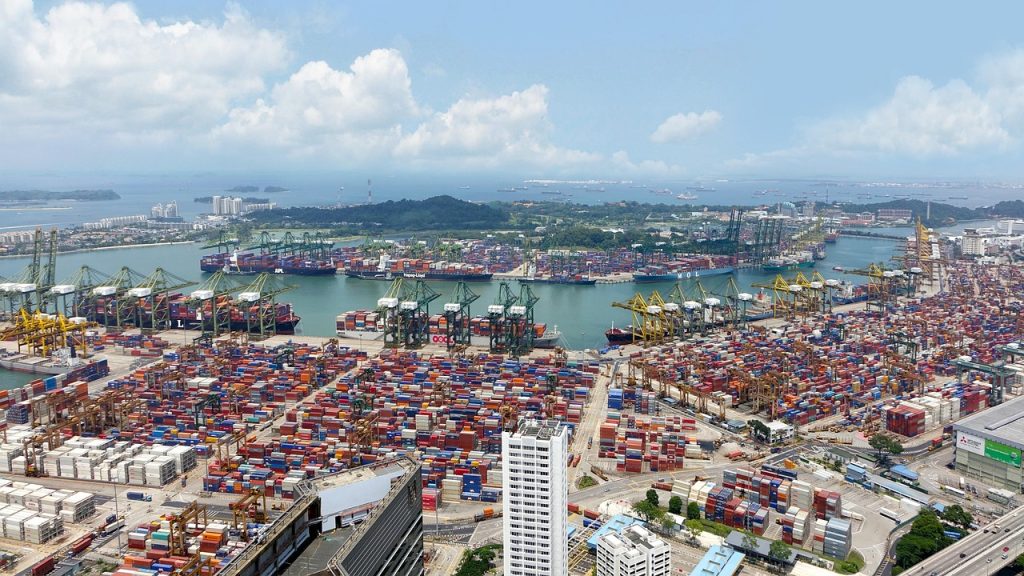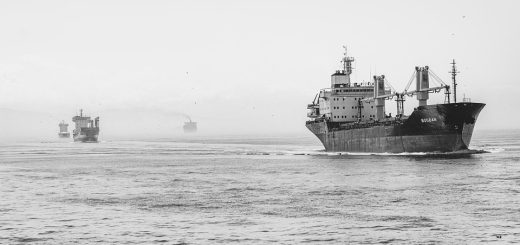Escalating Port & Handling Fees on China Exports: Forwarder Strategies for Europe & North America
Introduction
In the evolving landscape of global trade, one of the under-the-radar cost shifts gaining traction is the rapid escalation of port and handling fees applied to exports from China (and to China) and the knock-on effect on freight consolidation models into Europe and North America. Whether you’re a forwarder aggregating Chinese goods for European consumers or a North American importer relying on China-origin consolidation, understanding these cost drivers is now critical.
Major recent developments:
- The Office of the U.S. Trade Representative (USTR) announced that from October 14, 2025 vessels owned or operated by Chinese entities (or Chinese-built ships) calling U.S. ports will incur hefty port-entry fees (e.g., approx USD $50 per net ton initially). freightwaves.com+3Dimerco+3Reuters+3
- In response, the Ministry of Transport of the People’s Republic of China introduced “special port fees” for U.S.-linked ships beginning October 14, 2025, applying to vessels meeting U.S.-ownership/flag criteria. bimco.org+2HFW+2
- According to Reuters, these new fees are already reducing cargo-vessel availability, squeezing capacity and threatening to push up shipping costs. Reuters
- For exporters and forwarders, these structural changes add new fixed cost layers, risk of routing changes, and complexity in landed-cost modelling.
In this article we will cover:
- What is happening with port & handling fees relevant to China-export flows
- How these fee escalations affect forwarders & consolidators serving Europe & North America
- Strategic responses and operational adjustments you should make
- A 90-day action plan to manage the change
- Key risks & metrics to monitor
- Conclusion: adapting your model to sustain cost competitiveness

1. Port & Handling Fee Escalations: The New Cost Layer
1.1 U.S. Port Fees on China-Linked Vessels
The USTR’s fee regime is designed to penalise vessels owned/operated by Chinese entities (including Chinese-built ships) when they call at U.S. ports. Key elements:
- Starting 14 Oct 2025: USD $50 per net ton per rotation on Chinese-owned/operated vessels. Dimerco+1
- A parallel structure: USD $120 per container discharged (for Chinese-built ships) or USD $18 per net ton (whichever is higher) beginning the same date; escalating to USD $250 per container by 2028. Farm Policy News+1
- Maximum assessment capped at five rotations per year for a given vessel. freightwaves.com+1
- Legal and operational ambiguity remain (definition of “Chinese-owned”, “operator”, etc). supplychainbrain.com
For example, if a typical 13,000 TEU ship with net tonnage ~65,000 carries 13,000 containers, the fee at USD $50/ton could equate to about USD $3.25 million per rotation — ~USD $250 per TEU at full load. Dimerco
1.2 China’s Retaliatory / Parallel Port Fees
In a reciprocal response, China introduced its own “special port fees” on U.S.-linked vessels:
- Effective 14 Oct 2025: RMB 400 (~USD $56) per net ton. bimco.org
- Scheduled escalation: RMB 640 (Apr 2026), RMB 880 (Apr 2027), RMB 1,120 (Apr 2028). HFW
- These fees apply to vessels owned, operated, flagged under U.S.-linked conditions but exempting Chinese-built ships. bimco.org
1.3 Why the Fee “Leakage” Matters for Exporters & Forwarders
Although the fees are charged on vessels rather than directly on cargo, their real-world effect is:
- Carriers will seek to pass-through the cost to cargo owners (shippers, forwarders).
- They may reroute around affected trades, reducing capacity on standard lanes and creating scarcity/blank sailings. (Reuters: cargo-vessel availability already being impacted) Reuters
- The port/handling fee escalation becomes a structural cost that adds to the usual cost stack of freight + inland haul + customs + warehousing.
- Uncertainty/ambiguity around implementation (which vessels qualify, how fees are applied, how carriers redistribute cost) creates risk that must be modelled.
1.4 Other Handling/Administrative Fee Pressures
Beyond these headline port fees, there are ancillary increases:
- Demurrage/detention fees at Chinese origin ports or at European/North American destination ports continue to rise due to congestion.
- Inland haul cost increases (in China and Europe) are being passed down to origin costs.
- Additional customs data requirements, inspections, safety compliance (especially for China goods) add handling overhead and may be treated as “handling cost”.
- Forwarders may now amortise these hidden costs: e.g., origin consolidation warehouses may charge higher pick/pack or palletisation to account for slower dwell times or regulatory inspections.
2. Impacts on Forwarders & Consolidation Models (Europe & North America)
For those running China-origin consolidation models, how do these fee escalations translate into operational and commercial implications?
2.1 Landed Cost Pressure & Margin Compression
- When you add port/handling fee pass-throughs (either directly or indirectly via carrier pricing), landed cost per unit goes up.
- Especially impactful for low-value/high-volume SKUs, where margin is already thin. Many consolidation scenarios ran on razor margins; even modest fee increases can erode viability.
- Forwarders will have to decide whether to absorb, negotiate, or transfer cost to customers (sellers / suppliers / consumers).
2.2 Route & Carrier Selection Shifts
- Carriers may divert or avoid Hawaii-linked, China-U.S., or China-Europe lanes if their vessels are impacted by fees. As Reuters notes, carriers are reshuffling ships. Reuters
- Forwarders must review which carriers they use, what fleet/vessel tonnage is deployed, and whether those vessels may incur port-fee risk (and thus surcharges).
- The risk of blank sailings or reduced capacity on previously reliable corridors increases; lead-time volatility rises.
2.3 Consolidation Hub Strategy Recalibration
- Forwarders may pivot more volume to European hubs or North American domestic distribution to reduce exposure to direct China-destination lanes that may attract fees.
- They may restructure from many small shipments to fewer large consolidated shipments to amortise increased fixed cost layers (port fees, handling, documentation).
- The ability to shift part of the cost base to origin (China) consolidation or via alternative routing becomes more important.
2.4 Documentation, Carrier Negotiation & Cost-Visibility Requirements
- Greater transparency needed: forwarders must list out full cost stacks (port fee impact, routing cost, inland haul, customs, warehousing).
- Contracts with carriers/agents must include clauses around surcharge pass-throughs, port-fee escalation, route flexibility.
- Origin warehouses must flag handling/dwell cost increases, carrier detentions, container repositioning, so cost modelling remains accurate.
2.5 Customer Communication & Pricing Strategy
- For sellers (in China) and for consumers (Europe/North America), clarity is essential. Unexpected cost increases or delays reduce satisfaction.
- Forwarders might segment service tiers: e.g., “standard” (cost-optimised routing) vs “premium” (speed/lowest risk) with differential pricing to reflect fee risk.
- For North American importers particularly: consolidation models relying on “duty-free” or “low cost” assumptions may need to reprice.
3. Strategic Forwarder Responses & Operational Adjustments
Given the above, here are recommended strategic responses:
3.1 Audit Carrier Exposure to Port Fees
- Map which carriers and vessel fleets you currently use: Are they Chinese-owned/operated or Chinese-built? (This may determine whether they are subject to U.S. port fees.) Lloyd’s List
- Consider switching to vessels/carriers less exposed (non-Chinese built or non-Chinese operated) where possible, or negotiate fee pass-through transparency.
- Negotiate contracts with carriers for fixed or capped surcharges related to port-fee risk.
3.2 Consolidation Batch Strategy & Volume Leverage
- Increase batch size where possible: fewer shipments, larger volumes – spreads fixed costs over more units.
- Use origin China consolidation to optimise container fill, reduce container repositioning cost, reduce demurrage/detention.
- For multiple small parcels to Europe/North America, consider switching to fewer LCL/FCL shipments into hub warehouses rather than many small direct shipments.
3.3 Hub Routing & Inland Distribution Strategy
- For Europe: reroute goods into European hubs close to consumption zones to reduce last-mile cost and exposure to fee-heavy lane shifts.
- For North America: consider consolidation into U.S./Canada warehouses rather than individual shipments via China–U.S. routes subject to fee escalation.
- Build flexibility to shift routing based on carrier capacity, surcharges, and port-fee escalation risk.
3.4 Cost Model Transparency & Pass-Through Strategy
- Update cost models: include anticipated port/handling fee escalation scenarios (base, +10 %, +20 %).
- Embed surcharge clauses: e.g., “port-fee recovery surcharge” tied to published fee schedule or carrier pass-through.
- Educate sellers/customers: communicate that shipping cost structures are evolving due to vessel/port cost escalation, and pricing may adjust.
3.5 Monitoring & Risk-Management Framework
- Develop KPIs: e.g., cost per TEU, number of shipments, vessel/voyage exposure to fee regimes, schedule reliability, demurrage/detention cost, dwell time at origin port.
- Monitor shipping indices and alerts: e.g., changes in carrier announcements, blank sailings, port congestion, vessel re-deployments.
- Maintain contingency plans: if a key carrier withdraws service, have alternative carriers/routes; maintain buffer inventory in hub warehouses.
4. 90-Day Implementation Roadmap
| Timeframe | Key Actions |
|---|---|
| Days 0–30 | • Conduct carrier fleet audit: identify vessels/fleets subject to fee regimes and map exposure. • Update landed-cost models for your consolidation flows to include port/handling fee escalation scenarios. • Segment your SKU portfolio by margin sensitivity, cost risk exposure (low-value vs high-value). • Engage carriers/agents: request transparency on fee pass-throughs and routing flexibility. • Communicate with your origin China warehouse and European/North American destination hubs: capture origin handling cost escalation, container reposition costs, detention/demurrage trends. |
| Days 31–60 | • Pilot adjusted shipment strategy for selected SKUs: e.g., increased container fill, alternative carriers, batch consolidation. • Review hub routing strategy: assess cost/time trade-offs between direct China→destination vs China→hub→destination. • Initiate dynamic pricing model: include surcharge scenario, minimum order thresholds, volume discounts tied to batch size. • Monitor vessel schedule changes and blank sailing announcements for your key carriers/routes (indicative of capacity/reliability risk). |
| Days 61–90 | • Analyse pilot results: landed cost per unit, lead-time variance, cost deviations from previous baseline. • Finalise contracts with forwarders/carriers/hubs: fixed rate or capped surcharge terms for port/handling fee risk; route flexibility. • Update operational workflows: consolidation cut-off planning, batch size optimisation, origin warehouse instruction to suppliers. • Set up dashboard monitoring: cost per TEU, port fee pass-through component, vessel exposure index, schedule reliability index, container dwell time metric. • Review customer communication materials: shipping cost transparency, potential surcharge explanation, service-tier options. |
5. Risks & Warning Signals to Monitor
- Rapid rate rebound or capacity squeeze: If carriers avoid fee-exposed routes, capacity may shrink, causing freight rates to surge. Reuters already noted early signs. Reuters
- Carrier re-fleet or reflag to avoid fees: Changing ownership or flag to avoid classification may create unpredictability. Forwarders must stay vigilant. supplychainbrain.com
- Hidden cost creep: Demurrage, detention, inland haul, consolidation dwell cost may rise unexpectedly and add to fee burden.
- Small-parcel models under threat: For companies specialising in low-value/high-volume parcel forwarding from China, the added cost may make some SKUs uneconomic.
- Regulatory/route disruption: New fees may prompt rerouting, transit time lengthening, and alternate handling cost escalations.
- Customer backlash: If cost increases or delays aren’t communicated, order volumes may drop or cancellation/returns may rise.
Conclusion
The escalation of port & handling fees on China exports and China-linked shipping routes represents a structural shift in cost dynamics for global freight. For forwarders operating in the China → Europe and China → North America consolidation space, this is not a marginal issue—it’s a core change in the cost base and risk profile.
By auditing carrier exposure to fee-regimes, recalibrating consolidation & batching strategy, rerouting via hubs, updating cost models and contractual terms, and building monitoring infrastructure, you can minimise the impact, protect margins, and stay competitive.
Those who act early will be best placed; those who assume “business as usual” may face margin squeeze, disrupted service and rising risk.


Dia duit, theastaigh uaim do phraghas a fháil.